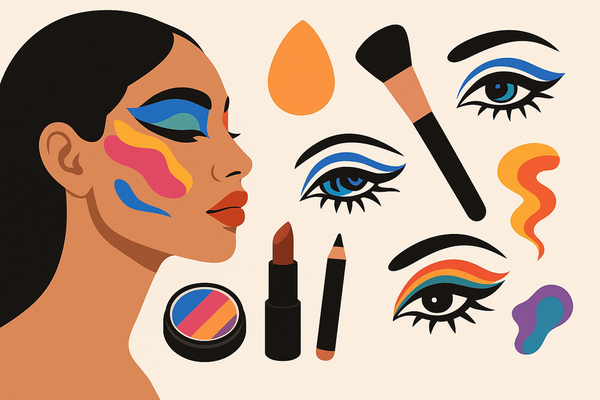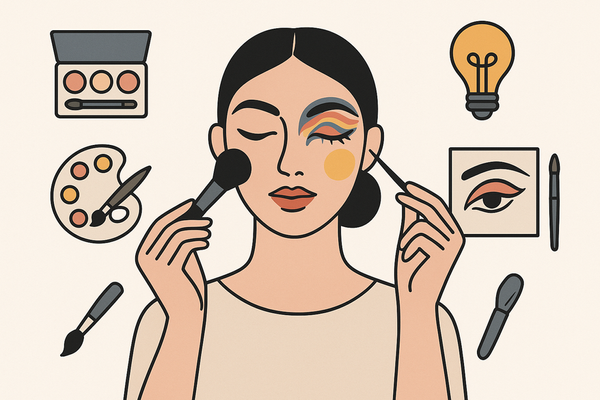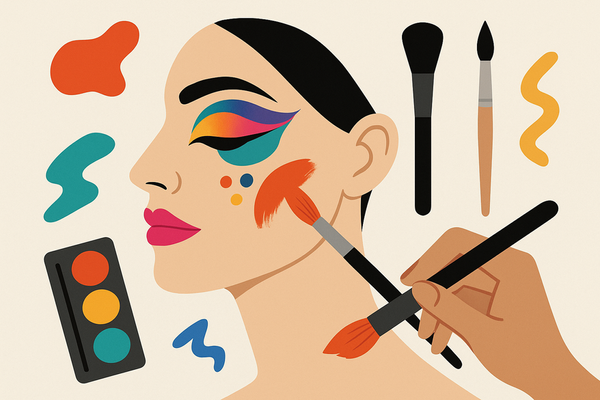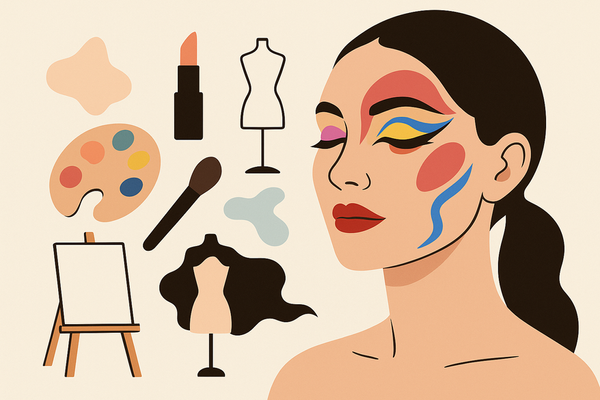Creative Makeup Designs: Transformative Techniques and Trends
Explore creative makeup designs that transform faces into art with transformative techniques, inspiring trends, and expert tips.
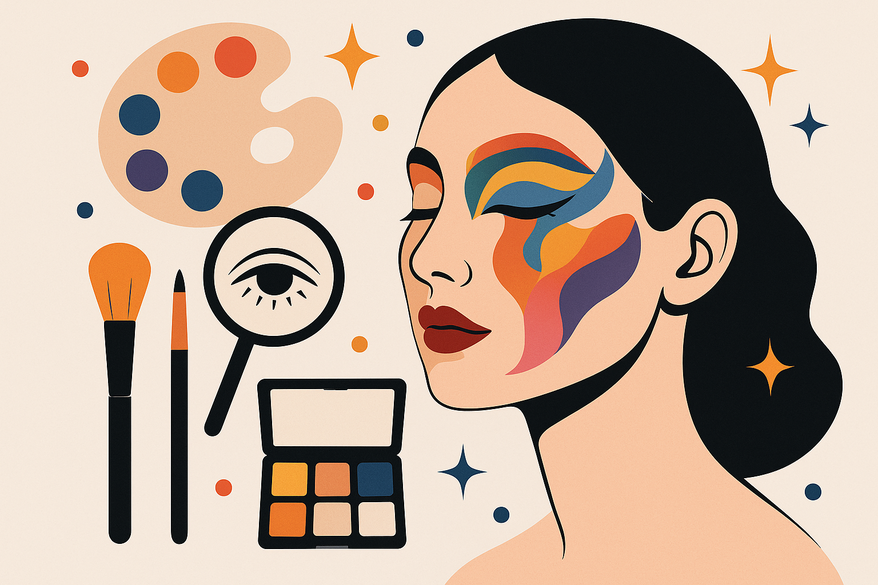
Estimated reading time: 8 minutes
Key Takeaways
- Creative makeup treats the face as a canvas for bold self-expression and storytelling.
- Artists blend *color theory*, *composition* and *technical skill* to craft avant-garde looks.
- Inspiration springs from fine art, fashion, culture, nature and social media movements.
- Core techniques include SFX, airbrushing, face painting and graphic detailing.
- Trends emphasize vibrant pigments, optical illusions and tech-integrated products.
Table of Contents
- Introduction
- What Are Creative Makeup Designs?
- Inspirations Behind Creative Makeup Designs
- Techniques and Methods
- Trends & Innovations in the World of Makeup
- Tips & Tricks for Aspiring Makeup Artists
- Integrate AI into Your Creative Workflow
- Conclusion
Introduction
Creative makeup designs are a form of artistic cosmetic application that transforms the face (and sometimes the body) into a canvas for self-expression—emphasizing bold colors, unique shapes, textures and imaginative effects beyond traditional beauty looks. Source: Design Encyclopedia, Makeup Check AI Blog
In today’s social-media-driven world, avant-garde makeup fuels global trends on Instagram, TikTok, runway shows and pop-culture events, as artists challenge beauty standards and spark conversations. Source: Makeup Check AI Blog
In this guide, you’ll explore core principles, sources of inspiration, cutting-edge techniques, emerging trends and actionable tips to elevate your creative makeup journey.
Section 1: What Are Creative Makeup Designs?
Definition & Core Principles
Creative makeup designs are artistic looks that prioritize transformation, drama and narrative over subtle enhancement. Artists treat the skin as a three-dimensional canvas—blending color theory, composition and theatrical flair. Source: Design Encyclopedia, Makeup Check AI Blog
Contrast with Conventional Makeup
- Conventional makeup focuses on evening skin tone and accentuating natural features.
- Creative designs employ vivid pigments, avant-garde shapes, special effects and unconventional textures. Source: Design Encyclopedia
Importance of Creativity
- Mastery of artistic principles: color harmony, contrast, balance and focal points.
- Technical skill: precision brushwork, airbrushing control and prosthetic application.
- Innovative thinking: pushing cultural boundaries and experimenting with new materials. Source: Design Encyclopedia
Section 2: Inspirations Behind Creative Makeup Designs
Art Inspiration
- Painterly influences (Picasso, Klimt) translate into eye-art patterns and contour shapes.
- Sculptural form and shadow guide 3D prosthetic placement—see Artistic Makeup Inspiration: Unleashing Creativity with AI for AI-driven ideas.
Fashion & Runway
- Editorial shoots debut experimental color combos, over-the-top lashes and metallic accents.
- Looks go viral within hours, fueling tutorials and DIY recreations. Source: Makeup Check AI Blog
Cultural Influences
- Heritage patterns—African tribal markings or Asian ink motifs—inspire modern face-painting.
- Balance homage with respect by researching meanings and collaborating with cultural experts. Source: Trendy Art Ideas
Nature’s Palette
- Butterfly-wing eye makeup uses gradient layering and winged shapes.
- Floral motifs translate into delicate petal stencils and watercolor washes.
- Animal prints become avant-garde face patterns or accents. Source: Makeup Check AI Blog
Influential Artists
- Mimi Choi: renowned for optical illusions like the half-peeled face effect.
- Tal Peleg: creates miniature landscapes on eyelids—tiny desert scenes with cacti and sunset. Source: Trendy Art Ideas
Social Media Platforms
- Instagram: #creativeMakeupDesigns has over 500K posts, showcasing rapid trend cycles.
- TikTok: viral challenges (e.g., “underpainting makeup hack”) garner millions of views. Source: Makeup Check AI Blog
Section 3: Techniques and Methods
Special Effects (SFX)
- Applications: dramatic monsters, aliens and fantasy creatures.
- Materials: foam-latex and silicone prosthetics; spirit gum and Pros-Aid adhesives.
- Removal: professional removers or isopropyl myristate to protect the skin barrier. Source: Design Encyclopedia
Face Painting
- Freehand designs: water-activated paints (vibrant but smudge-prone) vs. cream paints (long-wearing with sealant). Source: Makeup Check AI Blog
- Brushes: round liners for detail, flat shaders for base fills.
Airbrushing
- Equipment: compressor (20–35 PSI) and nozzles (0.2–0.5 mm for fine lines, 0.8 mm for broad coverage).
- Ideal for seamless gradients, soft contour transitions and ultra-fine glitter mists. Source: Design Encyclopedia
Graphic Lining & Detailing
- Tools: liquid liners with fine-tipped brushes and gel liners with ultra-fine liner brushes.
- Brands: Inglot AMC Gel Eyeliner, NYX Epic Ink Liner for precision.
- Styles: cut-creases, floating wings and disconnected liner shapes. Source: Makeup Check AI Blog
Tools & Materials Checklist
- Synthetic brushes (flat, angled, fine-tip for creams/liquids)
- Natural-bristle brushes (domed and tapered shaders for powders)
- Latex-free sponges for non-absorbent blending
- Pigmented cream palettes, water-activated paints, cosmetic-grade glitters
- Rhinestones, sequins, UV-reactive pigments
- Adhesives (spirit gum, Pros-Aid) and removers (isopropyl myristate)
- Sealants: setting sprays and glitter glue
Mini Tutorial: Step-by-Step Creative Face Art
- Sketch your design on clean skin using a white eyeliner pencil.
- Block in main color zones with flat synthetic brushes and cream paints.
- Define edges and add contrast with liquid or gel liners and fine round brushes.
- Layer details: glitter, rhinestones or pearls applied with cosmetic adhesive.
- Seal the entire look with a setting spray to lock in pigments and gems. Source: Makeup Check AI Blog
Section 4: Trends & Innovations in the World of Makeup
Bold, Vibrant Colors
- Trending palettes: Berry (#9F2B68), Sapphire (#0F52BA), Neon Lime (#A6FC74), Metallic Copper (#B87333).
- Editorial looks spotlight duochrome pigments and holographic flakes. Source: Makeup Check AI Blog
Graphic Liners & Floating Shapes
- Disconnected liners hover above the lash line for a “floating” effect.
- Cut-crease art uses sharp contrast shades with negative-space wings. Source: Makeup Check AI Blog
Hyper-Realistic SFX & Optical Illusions
- Micro-painting adds tiny details (pores, freckles) on prosthetics.
- 3D textures like layered latex petals create tactile depth.
- Seen on fantasy film sets and high-concept runway shows. Source: Trendy Art Ideas
Tech-Integrated Products
- AI foundation matchers (ModiFace, Perfect Corp) ensure seamless bases.
- AR try-on apps let artists preview looks before application.
- Impact: reduces waste, streamlines consultations and sparks experimentation. Source: Makeup Check AI Blog
Future Outlook
- Wearable tech: LED-embedded makeup, micro-OLED effects.
- Eco-friendly pigment innovations with sustainable sourcing.
- Virtual-reality makeup workshops in the metaverse.
Section 5: Tips & Tricks for Aspiring Makeup Artists
Practice Regime
- Daily face charts: sketch new ideas under time constraints.
- Timed challenges (10- or 20-minute sprints) to hone speed and precision.
- Replicate editorial looks to dissect layering and product choices. Source: Makeup Check AI Blog
Experimentation
- Mix matte pigments with glossy topcoats or silicone gels.
- Chart color wheels to discover fresh hue combinations.
Learning Resources
- YouTube channels:
- Alex Faction: character-driven tutorials.
- NikkieTutorials: product reviews and creative challenges.
- Online academies: Online Makeup Academy
- Interactive workshops: masterclasses at conventions and virtual sessions.
Safety & Skin Care
- Patch test all new products at least 48 hours in advance.
- Use skin-safe adhesives (Pros-Aid) and gentle removers (isopropyl myristate).
- Remove makeup with oil-based cleansers followed by a second cleanse.
- Apply barrier creams and rich moisturizers after long SFX sessions.
Integrate AI into Your Creative Workflow
For avant-garde artists, try Makeup Check AI to generate creative looks, track progress and master shade matching with cutting-edge algorithms.
Conclusion
Creative makeup designs elevate artistry into storytelling and cultural dialogue. By mastering principles, drawing diverse inspirations and experimenting with advanced techniques, you can transform everyday cosmetics into a full creative toolkit. Embrace your imagination—share your designs on Instagram and TikTok, tag @MakeupCheckAI, and join workshops to refine your craft. The canvas is yours; paint the future of beauty.
Further reading: Avant-Garde Makeup Trends, Pushing Beauty Boundaries: Creative Makeup Designs with AI
FAQ
- What qualifies as a creative makeup design?
It’s any look that goes beyond enhancement—using bold colors, textures, shapes or SFX elements to convey a story or concept. - How do I start experimenting?
Begin with simple face charts, use limited palettes and practice one technique at a time (airbrushing, face painting or graphic lining). - What safety measures should I follow?
Always patch test new products, use skin-safe adhesives, remove makeup gently and nourish the skin after each session. - How can social media help?
Platforms like Instagram and TikTok offer rapid inspiration, allow feedback from peers, and help your work gain visibility through hashtags and challenges.

